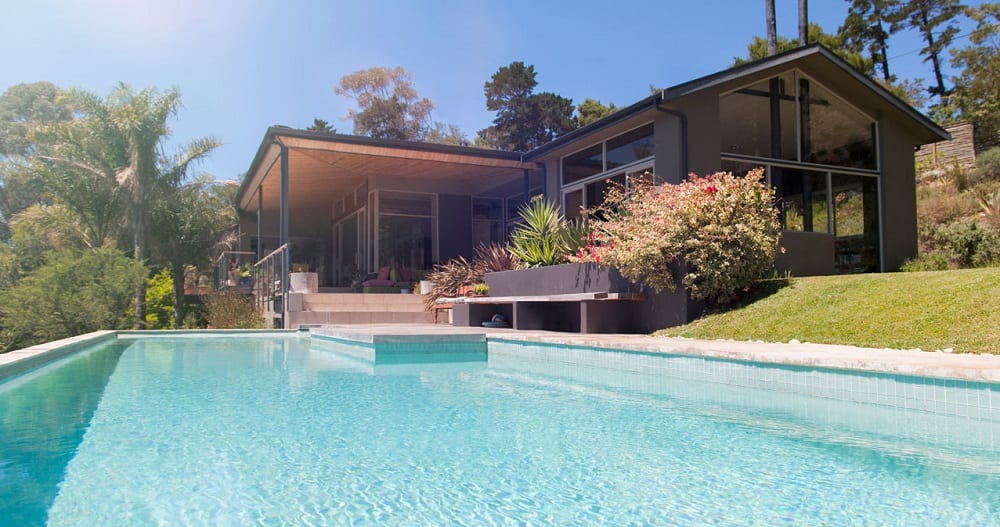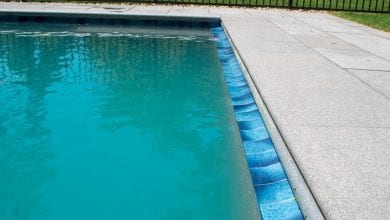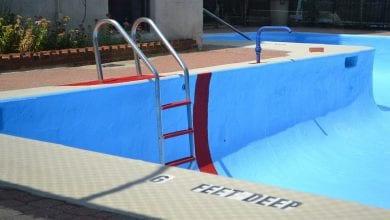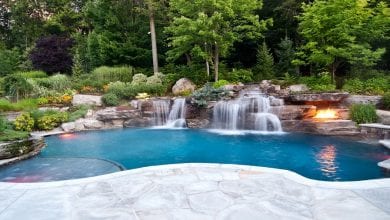
How To Lower Ph In Pool?
Pool owners have a lot to worry about to keep their pool in good condition. They have to worry about making sure debris is removed from the pool, that algae don’t build up on the pool’s walls or floors, and that the chlorine levels are in the right range. All of this care and concern can leave a lot of pool owners thinking that maybe they shouldn’t take the extra time to think about the pH level of their pool. After all, many people wonder how much of a difference could pH levels even matter. And to that, all we can say is that pH levels are extremely important and should never be ignored or disregarded.
Yes, you’ve read that correctly. You absolutely have to keep track of your pool’s pH level. If the pool’s pH level isn’t kept at a certain level, then some pretty bad things can happen. Although people tend to have problems with both high and low pH levels, we think that this article is going to concern itself with high pH levels and what the pool owner can do to bring those levels down to the correct range. If that sounds good to you, then follow along as we break down pH science and lay it out in an easy to digest fashion.
Why Is A High pH Level Bad?
Let us begin this article by telling you and all of our readers the bad things that can happen with a high pH level. We think this is important to talk about because we have personally heard people talking about how they didn’t feel like their pool’s pH levels were that important. So, let us just come out and say it right now. High pH levels are very bad and the following reasons will show all of our readers the side effects of a high pH level.
High pH Can Cause:
- Pool water with high pH levels are alkaline, and that can create calcium deposits.
- Calcium deposits can clog filters, popes and are hard to remove from surfaces.
- High pH water also can sting swimmers and dry out their skin.
- High pH water can also make swimmers feel sticky.
- Water with a high pH level will become hazy and/or cloudy.
- At higher pH levels, chlorine doesn’t work as effectively, leading to algae growth.
- Higher pH levels will require the pool owner to add more chlorine to the pool to get the same results.
Why Is A Low pH Level Bad?
Before we continue, we also wanted to say that high pH levels aren’t the only problem that might plague your pool. Low pH levels can also be a problem, so you should never “overcorrect” pH levels by going too far in the other direction. A pool’s pH levels have to be between 7.2 and 7.8. As we just told you, going over 7.8 is bad, but it should also be mentioned that going under 7.2 is also bad. What are the effects of low pH? Well, let’s take a quick look at some of them before continuing with our discussion of how to lower pH levels in a pool.
Low pH Can Cause:
- Damage to pool floats, pool toys, or softer parts of the pool.
- It can cause erosion of plaster or grout.
- It can cause vinyl liners to stiffen and eventually become brittle.
- Can cause burning eyes or dry skin.
- Can cause metals on lights, heat exchangers corrode.
What Causes A High pH Level?
Several different things can cause high pH levels. One of the things that can cause pH levels to rise, is a loss of carbon dioxide. Carbon dioxide loss can happen if chlorine levels are too low, but can also happen when there is a lot of swimming in the pool. While chlorine tends to raise pH levels, other sanitizing products such as Bromine have little to no effect on pH levels. Another thing that can cause an unexpected rise in pH levels is a heatwave while the pool is in direct sunlight. And as we said, too much chlorine will cause high pH levels, too.
How To Lower Pool pH Levels
Now that we know why pH levels are very bad and some of the things that can cause a spike in pH levels, it’s time to turn our attention to the main focus of this article: Lowering the pH levels of the pool. And to do this, the pool owner is going to have to assemble not only some tools they’ll need but also some time. As far as the information the pool owner is going to need to know to properly lower pH levels—we’re going to provide that information below.
Equipment Needed For The Process:
As we’ve said, before the process of lowering pH levels can be started, you’re going to need to have a few items on hand. Of course, most pool owners are going to have the following materials, or at least should have them, on hand.
Items Needed:
- Pool Testing Kit
- Sodium Bisulfate Or Muriatic Acid pH-Lowering Products
- Protective Clothing
- Safety Goggles
- Rubber Gloves
The Steps To Lower pH Levels In A Pool
Okay, now we know the basic equipment we’re going to need to lower the pH levels of the pool, it’s time to start the process. And as most people will probably guess by now, one of the first steps to lower pH levels is finding out just how high the pH levels are, to begin with, and for that, we’re going to need to test.
Step One: Test The Pool’s Water
Even though all pool testing kits are a little bit different from one another, they are more similar than they are different. Just remember to follow the kit’s directions and you should have no problem finding out the right pH level of the water.
The pH levels of the pool should be between 7.2 and 7.6. If the pH level is lower than that, then it needs to be raised, and if it’s higher, it will need to be lowered. You are also going to have to test the alkalinity of the pool to make sure that it’s at the right levels. Alkalinity should be somewhere between 80 ppm and 150 ppm.
Step Two: Treat The Water
Once you have determined that the pH levels of the pool need to be lowered, it’s time to put some of those pH adjusting products to good use. Most pH lowering products can be broken down into either Sodium Bisulfate or Muriatic Acid products. We’re going to go through the basics of each one so that our readers have a general idea of how they should be used. Before we do, however, let us go over the importance of following your product’s directions. Although the following instructions are a basic overview of how these products are used, they aren’t intended to replace the directions of your pH-lowering product. Those instructions always take precedence over anything we’ve written here.
Sodium Bisulfate
According to the manufacturer’s instructions, measure out the correct amount of sodium bisulfate according to the results of the pool’s pH levels. Some people say that only 75% of the recommended dosage should be used at first so that if the pool needs further correction it’s a lot easier to do.
Since this product is usually only available in powder form, you’re going to want to make sure that you don’t try to use it on windy days. If you do, then you may subject yourself to blowback that can adhere to your clothing, or even worse, on your skin.
The powder should be applied to the deepest end of the pool by getting down as close as possible to the water. The water pump and filter should be running through this whole process as well. Once it’s been applied to the water, use a pool brush to make sure that the product is evenly distributed. Using the pool brush will also help you break down any clumps in the powder there might be. Some products require the powder to be pre-dissolved to prevent it from staining surfaces, so if that’s the case with the product you’re using, then be sure to follow the product’s directions to the letter.
Muriatic Acid
If you’re not using Sodium Bisulfate, but are instead using Muriatic Acid, then the steps for applying it to the pool are going to be a little bit different. To apply Muriatic acid to your pool, the first thing that you’re going to want to do is read the label’s instructions thoroughly. This is a powerful corrosive that can cause damage to skin, eyes, and mucous membranes, so it’s also a good idea to wear the appropriate safety equipment as outlined by the product’s instructions as well.
Measure out the amount of product recommended by the label and then add it to the pool. This can be done in one of two different ways. The first method is to turn off the pump and then pour the acid in a steady stream at the deep end of the pool, allowing the acid to settle before turning the pump back on. The second method is to add the product over the return jets and then allowing the pump to do its thing.
Wait And Then Retest The Pool
Once the product has been properly applied to the pool, it’s time to hurry up and wait. At the very least, you’re going to want to wait for at least 2-hours before retesting the pool, but many products recommend that the pool be tested after 6-hours. Regardless of the length of time recommended, once the pool has been tested and pH levels are in the correct range, then you’ve finished lowering your pH levels. On the other hand, if the pH level still isn’t in range, then more products may be used.
What Happens If The Pool’s pH is Too Low?
If you’ve followed the directions on your product carefully and used the correct dosage of pH-lowering products, then your pool’s pH levels should be within range, but we do understand that pool chemistry can be a bit tricky and accidents happen, so you may have to raise the pH level if it has fallen below the 7.2 pH level. If that happens, then you’re going to have to add soda ash to raise the pool’s pH level.
If soda ash needs to be added to the pool, then first and foremost, you’re going to want to follow the directions on the product. For most soda ash products, you’re going to add a pound of it for every 10,000 gallons of water—giving it at least 4-hours to work before retesting. However, as we said, that’s just a general guideline, and you should follow the directions of the product that you’re using for advice on how to use it.
A Note About Alkalinity
Although the purpose of this article was to discuss how pH levels in a pool can be lowered, we’ve found that out of control alkalinity can be as big of a problem as out-of-control pH levels. And high or low alkalinity often goes hand in hand without out-of-control pH levels, so we should probably do a brief discussion of the effects of alkalinity on a pool before we conclude this article.
High Alkalinity Causes:
- It causes pH increases despite adding a pH reducer.
- It causes cloudy water.
- It creates an unstable pH environment.
- It creates an unsafe environment prone to microbial activity.
Low Alkalinity Causes:
- It causes rapid fluctuations in pH levels
- It can cause staining of surfaces.
- It can cause burning eyes.
- It can cause a burning scalp or dry skin.
- It can cause corrosion of metal parts in the pool.
- It can etch plaster.
- It can cause vinyl liners to lose their rigidity.







